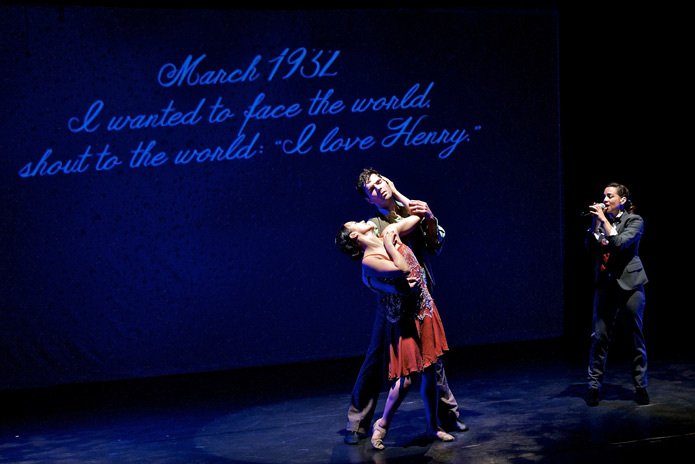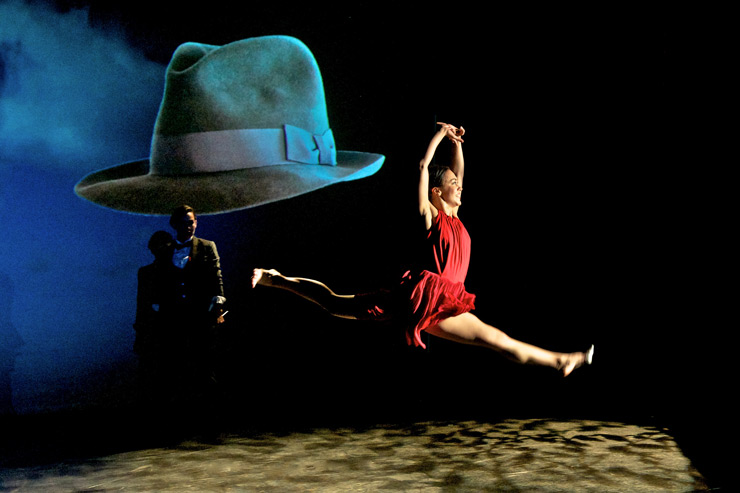‘Anaïs, A Dance Opera’
The Life of Anaïs Nin Told Through Music and Dance

Long before Lady Gaga was born — this or any other way — Anaïs Nin was forging a powerful creative identity in which she made no apologies for her voracious sexuality. Now remembered primarily as the lover of Henry Miller and as the author of two popular volumes of highbrow erotica, Delta of Venus and Little Birds, Nin’s central achievement as a writer was her monumental diary. First published between 1966 and 1976 in expurgated form, the seven volumes became extremely popular, especially among second-wave feminists, as they were seen as demonstrating an admirable rejection of the traditional sexual double standard. After Nin’s death in 1977, work on an unexpurgated edition of the diaries was initiated, and in the early 1990s the new version began to appear, including more detailed accounts of some of the most provocative episodes in Nin’s wildly unconventional life.
On Friday-Saturday, September 8-9, Anaïs, A Dance Opera by composer/lyricist Cindy Shapiro and director/choreographer Janet Roston comes to The New Vic thanks to author and Santa Barbara resident Diana Raab (see interview with the author). The show has been in existence for a little more than two years; the cast that’s coming here just completed an extended run of 24 performances at the Festival Off d’Avignon in July and will continue on to the Musco Center for the Performing Arts at Chapman University later this month.

I spoke with Janet Roston from her home in Los Angeles on a hot afternoon last week. Roston, who has won several Ovation Awards and a Los Angeles Drama Critics Circle Award for her choreography, said that the Anaïs Nin story offered an opportunity to address some of the lingering effects of the sexual double standard through art. “Anaïs was slut shamed when she was alive, and it happened to her again in 1995 when a very judgmental biography [by Deirdre Bair—Ed.] came out,” Roston said. “Suddenly you stopped seeing the Diary and the Delta of Venus everywhere, and Nin went from being a respected writer whose work showed up in college courses to having less of a presence.”
But that was before the internet created a whole new generation of readers, who give Nin the benefit of the doubt in exchange for such words of wisdom as, “We don’t see things as they are; we see them as we are,” a line from Nin’s 1961 novel Seduction of the Minotaur. In Roston and Shapiro’s piece, Nin is played by a singer who performs as the “Eternal Anaïs,” along with six dancers portraying Nin, her two husbands, and Henry Miller, among many other characters. The music is a mash-up of contemporary classical and rock, with the singer brandishing a handheld microphone. The choreography translates Nin’s bold international idiom into moves that showcase the technique and the acting talent of these top L.A. professionals.
Anaïs, A Dance Opera has met with a heartening reception, first at the Greenway Court in Pasadena, and then particularly in Avignon, where young French women were intrigued by this feminist icon about whom they knew so little. Nin’s rejection of conventional sexual morality predates the breakthrough theories of Simone de Beauvoir in The Second Sex by several decades, making her an important example of the consequences that can accompany such a fundamental rebellion. Audiences at The New Vic this weekend will see for themselves if Nin’s life, now translated into music and dance, still retains the power to shock and enlighten.
4•1•1
Anaïs, A Dance Opera plays Friday-Saturday, September 8-9, at 8 p.m., at The New Vic (33 W. Victoria St.). See etcsb.org or call (805) 965-5400.



